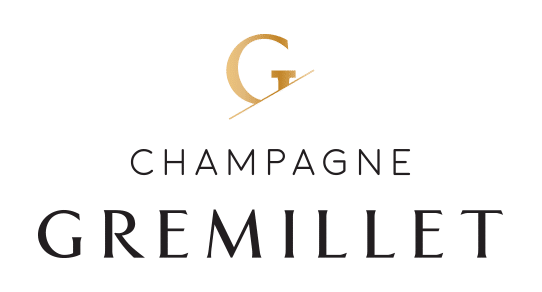The Vinification
The transformation process
The grapes are harvested and our terroir offers us the best. They naturally contain all the necessary ingredients to make champagne.
Let us guide you through all the stages of the transformation and work of our company.
THE PRESSING
At the end of the summer, the grapes are ripe. The pickers and the pressure pickers work together, the grapes are pressed, fresh. In a few hours, they go from the vine to the vat!
4,000 kilos of grapes render 2,050 litres of juice at the first press. Our Champagnes come exclusively from this first pressing, the best, the « cuvée ».
Once in the vat, the alcoholic fermentation begins, the wine slowly matures and becomes lighter; then, the time for racking will come when the clear wine and its precious aromas will be separated from the deposit at the bottom of the vat.
THE BLENDING
From autumn to the deepest part of winter, slowly, the wine will clear. The cellar master and his assistants will filter it several times. At the beginning of the new year, the wines will be clear, this is the decisive moment when they can be tasted and blended.
Blending is a subtle art: a marriage of wines from different grape varieties, terroirs and vintages in varying proportions carried out each year.
Several tasting committees bringing together oenologists and friendly winegrowers are held. Their mission is to bring the house’s unique style and taste to life from one year to the next.
THE BOTTLING
The spring following the harvest, we proceed to draw the wine.This is the bottling stage. A tirage liqueur composed of sugar and yeast, whose proportions are our secret, is then added. This liqueuer causes a second fermentation in the bottle, known as the foaming.
At this precise moment, the wine becomes effervescent.
THE MATURATION
Preserved lying down in the dark and at a constant temperature in the depths of our cellars, the bottles rest on their lees for a minimum of 22 months and up to 5 years for the vintages. An ageing time longer than the standards in force, which gives more complexity and finesse to our champagnes.
The bottles will then gradually move from a horizontal to a vertical position, ending upside down, where the deposit will be concentrated. Once carried out manually, this is is now done mechanically and more precisely, thanks to the gyropallets.
THE DISGORGING PROCESS
Finally comes the last, very important step; the disgorging process. The bottle, still maintained in a vertical position is inserted into a freezing tray, crystallizing the sediment that has collected in the neck of the bottle. When the bottle is subsequently turned upright and opened the pressure in the bottle expels the frozen deposit without too much of the precious wine being lost. A special homemade liqueur, called “shipping liqueur” and composed of cane sugar and champagne is then added; the proportion of this liqueur determining whether the champagne is brut nature, brut or demi-sec. The bottle is then corked, using a wire cage to contain the pressure which can be as high as 5 bars per bottle.
The Vinification
The transformation process
The grapes are harvested and our terroir offers us the best. They naturally have all the necessary ingredients to make champagne.
Let us guide you through all the stages of the transformation and work of our company below.
THE PRESSING
At the end of the summer, the grapes are ripe. The pickers and the pressure pickers work in rhythm, the grapes are pressed, fresh. In a few hours, it goes from the vine to the vat!
4,000 kg of grapes give 2,050 litres of juice at the first press. Our Champagnes come exclusively from this first press, the best, the « cuvée ».
Once in the vat, the alcoholic fermentation begins, the wine slowly finishes and becomes lighter; then, the time for racking will come when the clear wine and its precious aromas will be separated from the deposit at the bottom of the vat.
THE BLENDING
From autumn to the deepest part of winter, slowly, the wine will clear up. The cellar master and his assistants will filter it several times. At the beginning of the new year, the wines will be clear, it is the decisive moment when they can be tasted and blended.
Blending is a subtle art: a marriage of wines from different grape varieties, terroirs and vintages in varying proportions each year.
Several tasting committees bringing together oenologists and friendly winegrowers are held. Their mission is to bring the house’s unique style and taste to life from one year to the next.
THE BOTTLING
The spring following the harvest, we proceed to the drawing, it is the bottling. A tirage liqueur composed of sugar and yeast, whose proportions are our secret, is then added. This liquor will cause a second fermentation in the bottle, it is the foaming.
At this precise moment, the wine becomes effervescent.
THE MATURATION
Preserved lying down in the dark and at a constant temperature in the depths of our cellars, the bottles rest on their lees for a minimum of 22 months and until 5 years for the vintages. An ageing time longer than the standards in force, which gives more complexity and finesse to our champagnes.
The bottles will then gradually move from horizontal to vertical, ending upside down, where the deposit will be concentrated. Handling that was once done manually on desks, it is now mechanical and more precise thanks to the gyropallets.
THE DISGORGING PROCESS
Finally comes the last, very important step; the disgorging process. The bottle, still maintained in a vertical position is inserted into a freezing tray, crystallizing the sediment that has collected in the neck of the bottle. When the bottle is subsequently turned upright and opened the pressure in the bottle expels the frozen deposit without losing too much of the precious wine. A special liquor, homemade, called “shipping liquor” and composed of cane sugar and champagne is then added;
the proportion of this liquor determining whether the champagne is brut nature, brut or demi-sec. The bottle is then corked, using a wire cage to contain the pressure which can be as much as 5 bars per bottle.

